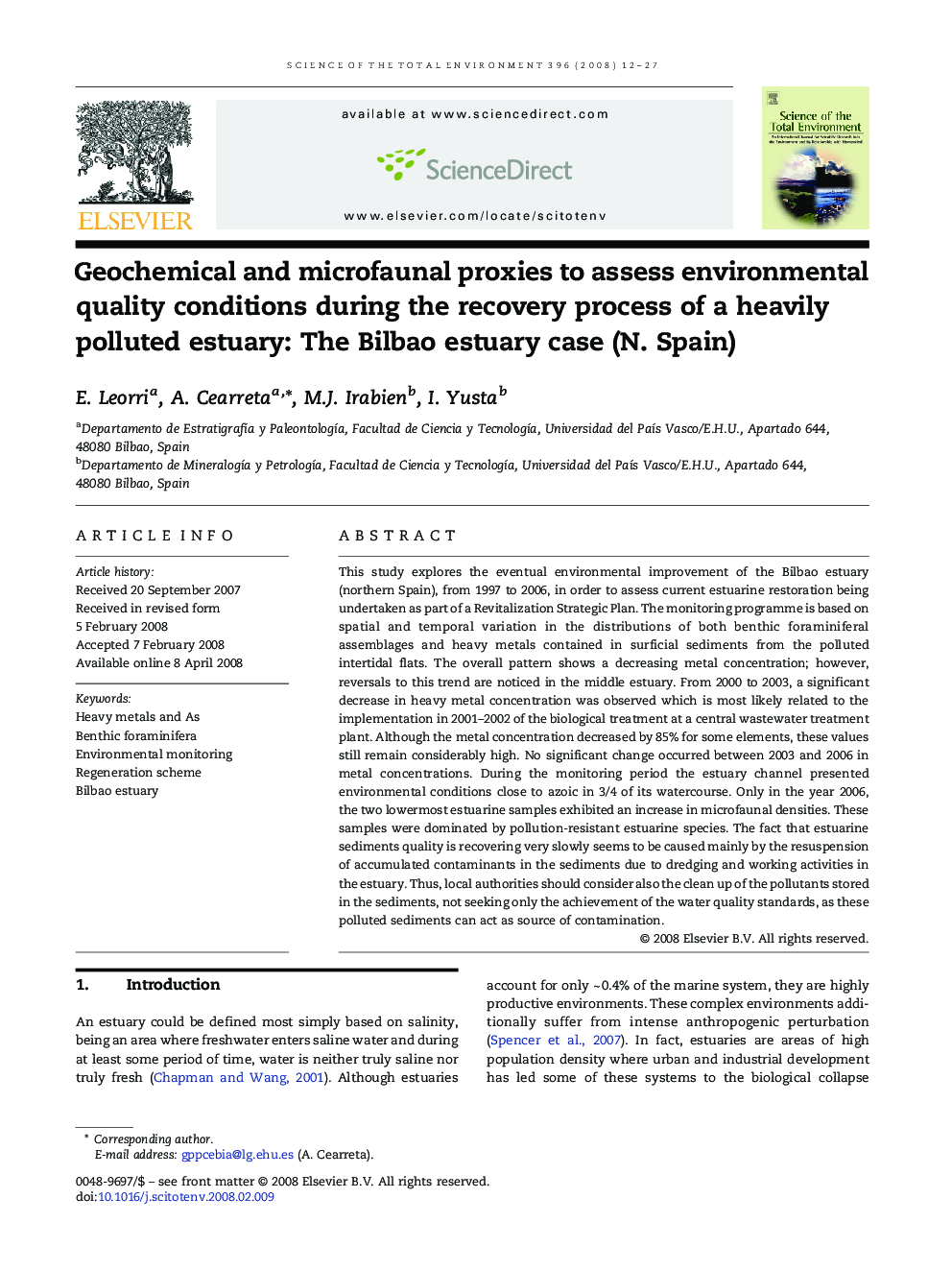| Article ID | Journal | Published Year | Pages | File Type |
|---|---|---|---|---|
| 4431917 | Science of The Total Environment | 2008 | 16 Pages |
This study explores the eventual environmental improvement of the Bilbao estuary (northern Spain), from 1997 to 2006, in order to assess current estuarine restoration being undertaken as part of a Revitalization Strategic Plan. The monitoring programme is based on spatial and temporal variation in the distributions of both benthic foraminiferal assemblages and heavy metals contained in surficial sediments from the polluted intertidal flats. The overall pattern shows a decreasing metal concentration; however, reversals to this trend are noticed in the middle estuary. From 2000 to 2003, a significant decrease in heavy metal concentration was observed which is most likely related to the implementation in 2001–2002 of the biological treatment at a central wastewater treatment plant. Although the metal concentration decreased by 85% for some elements, these values still remain considerably high. No significant change occurred between 2003 and 2006 in metal concentrations. During the monitoring period the estuary channel presented environmental conditions close to azoic in 3/4 of its watercourse. Only in the year 2006, the two lowermost estuarine samples exhibited an increase in microfaunal densities. These samples were dominated by pollution-resistant estuarine species. The fact that estuarine sediments quality is recovering very slowly seems to be caused mainly by the resuspension of accumulated contaminants in the sediments due to dredging and working activities in the estuary. Thus, local authorities should consider also the clean up of the pollutants stored in the sediments, not seeking only the achievement of the water quality standards, as these polluted sediments can act as source of contamination.
